Alessio de’Navasques is a curator, writer, and researcher whose work reimagines fashion curation as a form of cultural expression—one that reflects both history and the present. As Curator of Cultural Programs at 10 Corso Como in Milan, he has organized major exhibitions such as Yohji Yamamoto: Letter to the Future, Andrea Branzi: Civilisations Without Jewels Have Never Existed, and Glen Luchford: Atlas. Known for bridging fashion with art, architecture, and critical theory, de’Navasques has introduced innovative approaches to how fashion can be exhibited and interpreted.
In 2012, he founded A.I.–Artisanal Intelligence, a platform dedicated to craftsmanship, heritage, and innovation in Italian fashion, supported by AltaRoma and leading institutions across Europe. A lecturer in Fashion Archives at Sapienza University of Rome, he has also contributed to Vogue, i-D, Artribune, and DUST Magazine. His ongoing work continues to shape how we understand fashion today—not as an isolated discipline, but as a living mirror of the world around us.
hube: You grew up in Puglia, a region that has undergone remarkable cultural transformation in recent years. How did the landscape, traditions, and shifting identity of that place shape your visual and curatorial instincts?
Alessio de’Navasques: Talking about Puglia, it’s a land full of inspiration. From a curatorial perspective, however, I don’t have many references there because my vision has always been international. I left Puglia a long time ago, and since my father is from Rome, I’ve always felt a stronger connection to that city, where I have been living for more than twenty years. Rome is endlessly inspiring—a place where the past is constantly reinvented in the present. In that sense, my projects are shaped more by Rome than by Puglia.
Puglia is undergoing a major transformation, yet culturally it still feels underdeveloped. The contemporary scene is trying to emerge but hasn’t quite taken shape yet—though I hope it will. There are some interesting independent spaces, but institutional support is almost entirely absent. The region is rich in cultural heritage, but when it comes to the contemporary, it’s still lacking.
One thing that is part of my DNA, however, is the connection between craft and territory. That’s something I began exploring early in my career when I founded A.I.–Artisanal Intelligence. The idea of heritage—the intangible heritage embodied in craftsmanship—is something I learned to value deeply. It’s tied to the land, to tradition, to the techniques and artisanal practices that have been passed down from generation to generation and carried into the present. It’s something rooted in the spirit of the territory—part of me.
h: Your path into the cultural field spans fashion, curation, research, and education. Was there a defining moment or influence that clarified your direction? What helped you understand your voice as a curator and cultural mediator?
ADN: All those aspects are components of one vision: education. It’s something that comes when you research; it’s beautiful to share with students, and you can learn a lot from them. Education is always part of sharing and research, there is a lot to do in Italy in terms of fashion curation. There are many archives, and fashion studies still feel pretty new. In terms of research, it’s only in the last 30 or 40 years that this field of study has developed.
In fashion studies, you have a very academic field and some independent scenes, and sometimes those two aspects are not integrated. I’m trying in my projects to integrate both visions—reading and activating archives through contemporary questions.
It’s about understanding how we can talk about fashion in a different way, finding a voice that is independent and can reach a larger audience, because sometimes fashion studies are enclosed in the small island of academia, with little connection to the contemporary.
I’m a part of a generation between those who started this kind of work, when there were no fashion studies, and the new generation that comes from them. Most scholars came from anthropology, sociology, history, or art history. I’m an architect. There was a desire to bring out all this knowledge and culture about fashion. My process is around intuition; it’s not logical or classical.
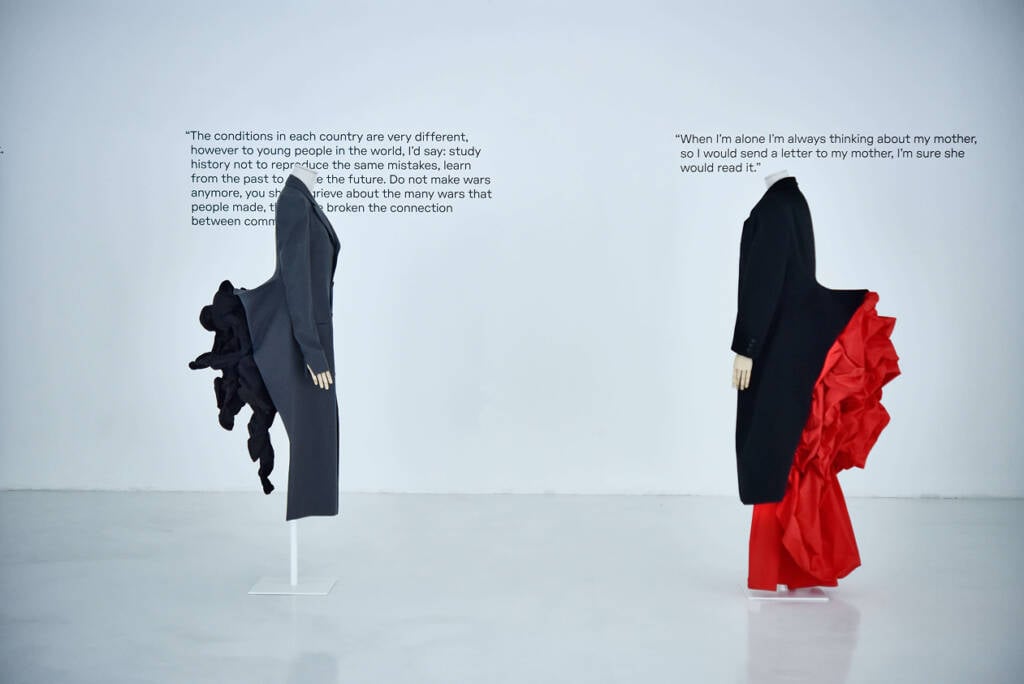
Photography by GILDA & BODHA

Photography by GILDA & BODHA
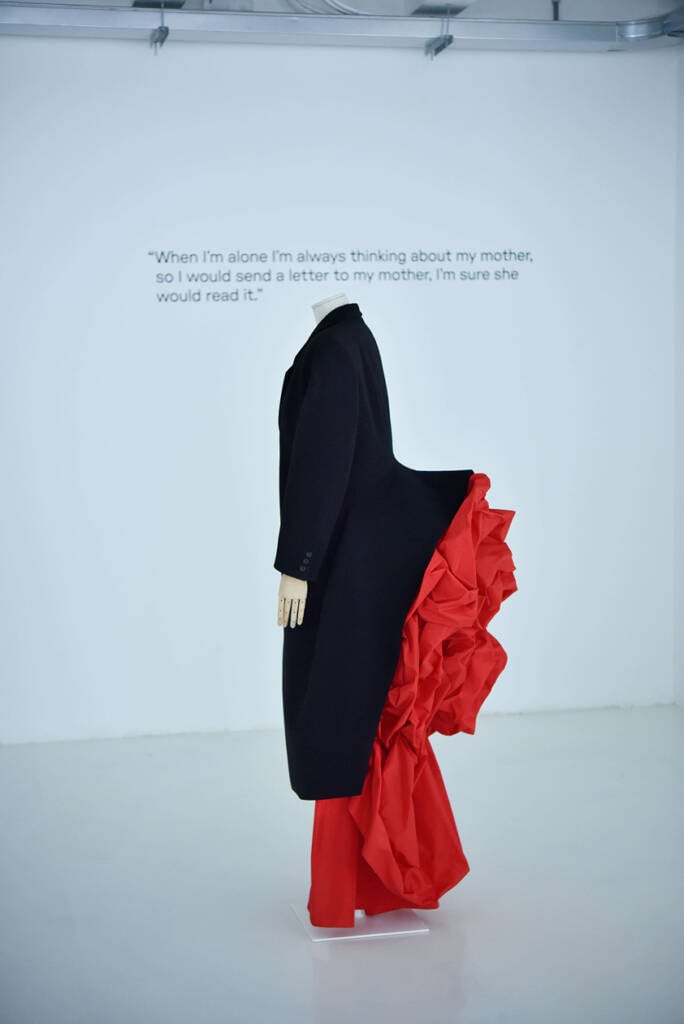
Photography by GILDA & BODHA

Photography by GILDA & BODHA
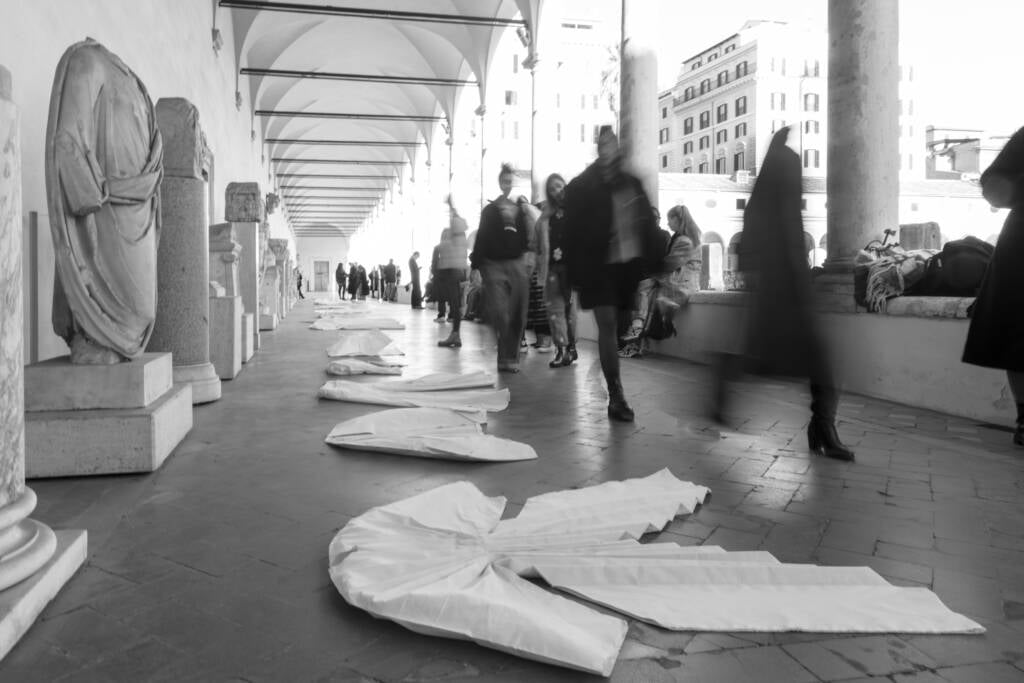
Photography by CINZIA CAPPARELLI

BATHS OF DIOCLETIAN NATIONAL ROMAN MUSEUM
Photography by CRISTINA CRIPPA
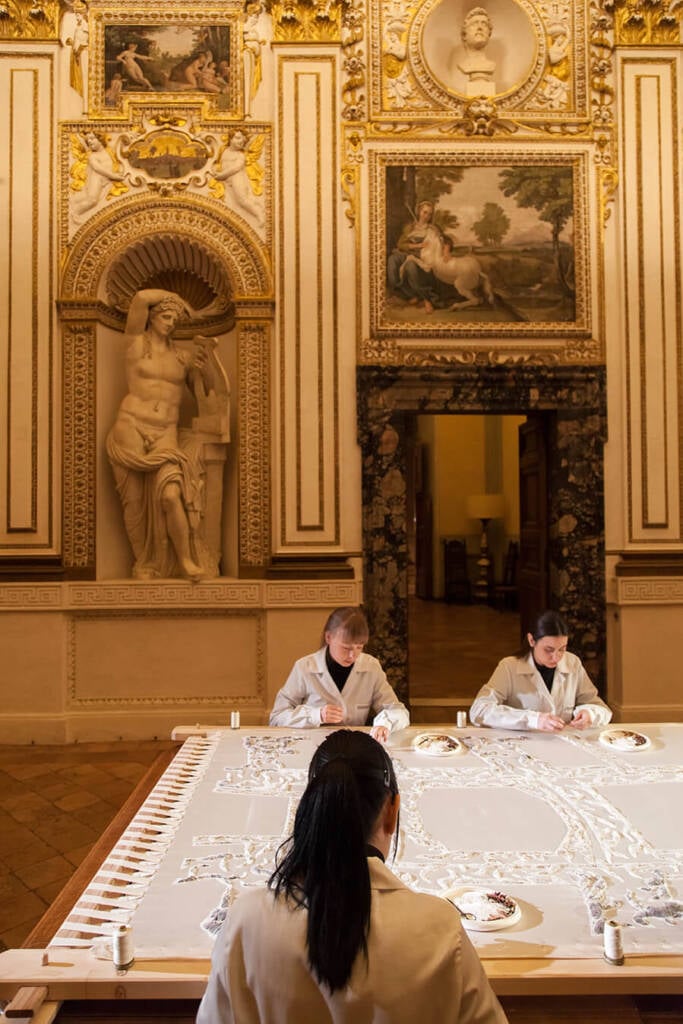
Courtesy of SYLVIO GIARDINA
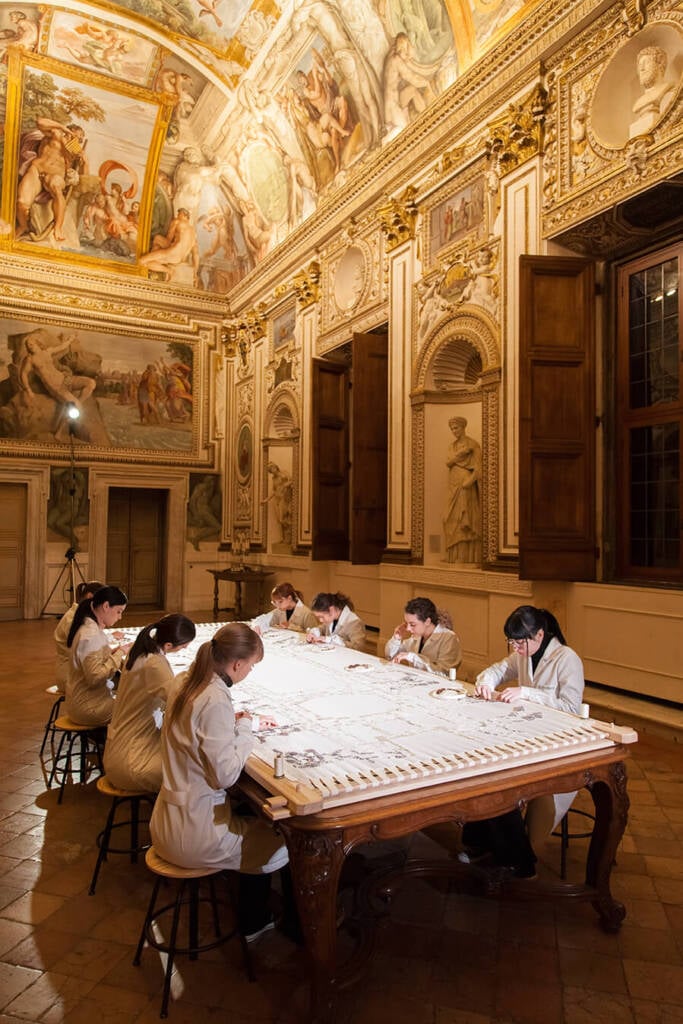
Courtesy of SYLVIO GIARDINA

Installation in Gallery
h: Your work frequently bridges archival research and contemporary practice. How has your engagement with archives informed your views on craftsmanship, heritage, and the future of sustainable fashion?
ADN: Fashion is one of the most vibrant mediums in culture. Through fashion, you can understand art, architecture, and cinema. It’s a medium that keeps its own characteristics and personality. I try to work not only by studying and researching but through real epiphanies. I believe that ideas are more interesting in how they arrive—through intuition and discovery.
It’s always about discovering and telling a story. At the beginning of my career in Rome, I worked around crafts and craftsmanship, especially with archives of cinema, theatre, and tailoring. There are five or six big archives with giant warehouses filled with fashion collections, original pieces, and costumes. There is always a process of reinventing these costumes because the costume makers adapt them from one thing to another. The original vintage pieces were reused. Now there is a policy to preserve them. It’s the product of crafts as a universal language through cultures. The artisanal process is always sustainable because it follows a rhythm that is not the fast one of fashion. That is sustainable because everything is handmade. When we started to talk about these topics about 15 years ago, it was rare; now it’s common in discussion—the way brands communicate, spreading the culture of crafts and sustainability.
h: In your A.I. Artisanal Intelligence platform, you’ve explored the dialogue between technology and tradition. As AI continues to evolve, which aspects of it do you embrace in your work, and which do you consciously resist? How do you see artisanship surviving—or thriving—within a tech-driven era?
ADN: The idea of AI when my partner in the project Clara Tosi and I started didn’t exist. The name came from Spielberg’s film A.I.–Artificial Intelligence. It was 15 years ago. The title came from that film, which was an incredible intuition of what would happen a decade later. The idea was that the artisanal touch is something artificial intelligence can never have—that mix of sensibility, intuition, balance, nature, and beauty that only a human hand can create. The project also aimed to show that the artisan is an inventor—someone who invents techniques and processes close to science. We wanted to show that there is a shared DNA—a bridge between cultures, something to preserve as intangible heritage, especially when combined with technology. The exhibition Manus x Machina at the Metropolitan Museum in New York showed that completely handmade processes never really existed. From the beginning, fashion involved machines—machina—a mix of technology and craftsmanship that shaped French and Italian fashion. It’s about process—a handmade touch that connects to human experience and can combine with technology and innovation.
Used in the right way, AI can help, because it’s a fast combination of what humans have already done. The problem lies in the sources. No one is really writing texts—everyone just uses AI. If used well, it helps with understanding texts and finding information. Still, I don’t think it will ever become a human mind. It’s something that aggregates and elaborates what humans have already done. It’s fast and useful, but sometimes it gives only one answer—and that’s dangerous. No one questions it; it gives one result that seems right but may not be. It’s risky when things are too simple—with Google, you compare, you choose. With AI, you often get just one option, which can be misleading.
h: You’re currently working on a research project centered on the archive of Belgian designer and artist Pharaildis Van den Broeck. What drew you to her work, and how do you see her artistic language contributing to the contemporary conversation around fashion and identity?
ADN: It’s interesting because she’s, in a way, a forgotten figure. It’s a project that will bring a collaboration with the MOMU in Antwerp because she was a figure who opened the way to the Six of Antwerp. She’s the first designer from Belgium who worked in fashion in Milan at the end of the seventies, and especially at the beginning of the eighties with Gianni Versace. She encouraged the group of designers to move, to be active, and they were friends.
She had a special story: she worked for many years in fashion, then at one point retired completely and devoted herself fully to art, producing around a thousand works that nobody ever saw.
She was a special female artist—between art and fashion, and there are not many like that. Since the archive is already active from the art point of view, we are studying her fashion career to open it to scholars and students, showing how one can switch completely from fashion to art.
For Belgian fashion, she has historical importance because she helped open the perspective of Belgian design and fashion. She was a ‘ghost designer,’ working for brands and having her own label. She was influential by proposing freer, more experimental fashion–that came from a woman working alone in Milan in the seventies—not an easy context. Later, she completely refused the world of fashion and worked for another twenty years in visual art, producing thousands of works she archived herself. Probably, she wanted to be rediscovered.
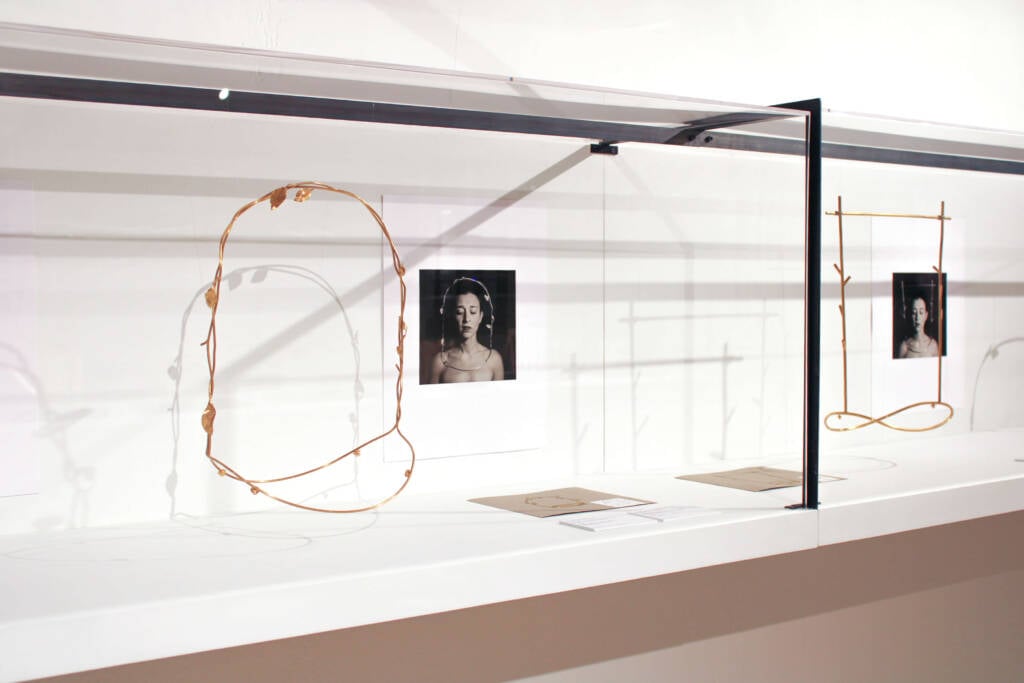
Photography by FRANCESCO D’AURELIO
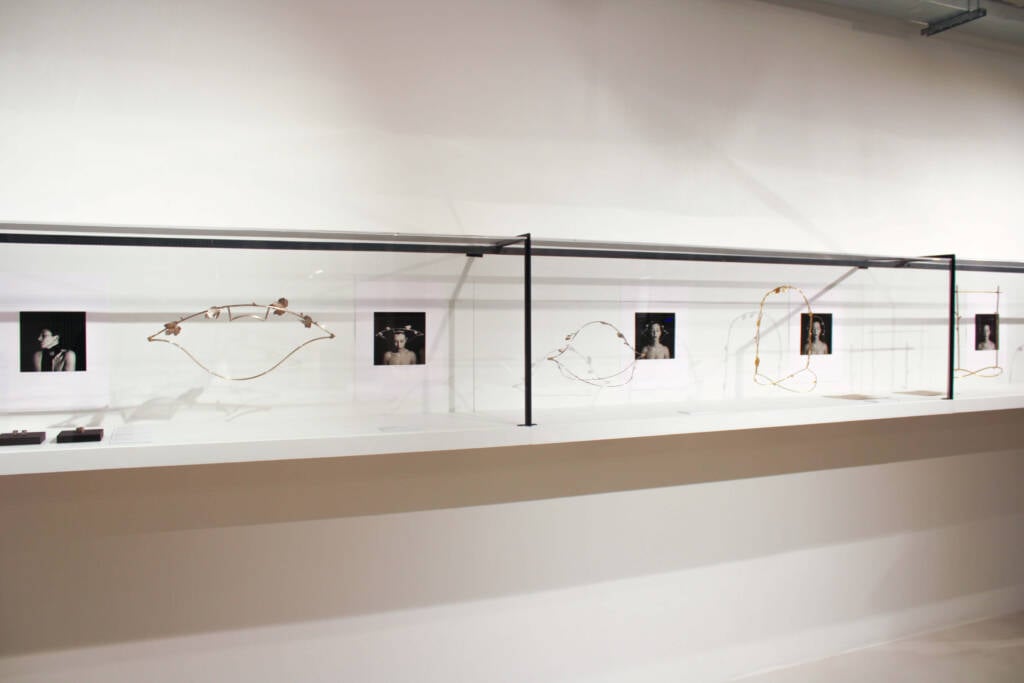
Photography by FRANCESCO D’AURELIO
h: If you could curate an exhibition without any limitations—budget, space, time—what would it be about, and where would you stage it?
ADN: I don’t work so much with dreams. I’m triggered by limitations, sometimes starting from very small things. It’s difficult for me to think about dreams in such a difficult moment—dreams are really few. I really act as an architect: I start from the main element in the space, in the archive—one piece can starts a critical reflection.
h: How do you think the role of the curator is changing today? Has it become more about storytelling, activism, caretaking?
ADN: It’s a moment in which it’s important to be critical, having a critical point of view on questions and trying to find a language to express, or medium—whatever it is, your way to express your idea. Nowadays, curation is for everything, even for an Instagram profile. How can you try to be critical? To reactivate archives or work of an artist or fashion designer from a perspective that is contemporary? This role is changing, especially in fashion because it is not the same as a curator from previous generations.
For them, fashion — and especially the fashion exhibition — represented the expression of a curator’s vision, a kind of authorial statement, following a mythology shaped by figures such as Harald Szeemann. It was a context in which to assert an idea, to select what was necessary in order to build a concept. As Valerie Steele once put it in an article for Fashion Theory, “A fashion museum is more than a clothes-bag.”
Today, however, we are increasingly moving toward an approach that starts from the fashion object itself, which is now studied in a more scientific way — as an important form of evidence, carrying intrinsic values. That, I think, is the major difference compared to previous generations. Fashion is now more widely recognized as a form of identity, cultural and social expression — as a synthesis of a society’s thinking, or that of a particular group, culture, or subculture; as something that encapsulates both tangible and intangible heritage.
At the same time, I sometimes find the academic context of fashion studies — even among younger generations — a bit oppressive because of its tendency toward closure and its loss of connection and dialogue with other disciplines. Of course, it depends on the context, but when fashion only speaks about fashion, it risks becoming less relevant. The development of new methodologies applied to the study of fashion is certainly crucial, but it’s equally important to understand that fashion is a point of contact among very different forms of expression — and it’s precisely at that intersection that my own practice takes place.
There are still many open questions concerning the museography and museology of the fashion system. One of the central ones is that of display: how can we exhibit objects that were conceived in relation to movement and to a living, vibrant body that activates them? I believe this remains an open field of exploration. Some have found ways through performance-based systems, others through architectural strategies, but there is still much to be discovered.
h: In an era when fashion is often reduced to content, how can curators reassert its depth—as a system of meaning, not just a product?
ADN: I don’t think fashion is disconnected from the new perspectives in curation. Sometimes, however, it can be too connected, because I don’t want every fashion exhibition to be politically correct or always focused on contemporary issues, which can sometimes become boring. Contemporary concerns are important, but so is history and understanding what lies behind it. At this moment, maintaining that kind of balance is crucial.
For example, I greatly admire what they do at the MOMU in Antwerp. Their interdisciplinary approach resonates with mine, while always keeping a fresh, contemporary perspective. Their exhibitions are beautiful and simple in structure—I love how they arrange them.
There’s always a perspective that starts from the contemporary but is rich with inspiration from the past. That’s the key for me. Every exhibition evokes this feeling. I constantly engage in a dialogue or comparison with an artist or an idea that sparks my interest. The topics are intriguing, because fashion itself is intriguing. Fashion is also fun—something you have to play with. When it becomes too serious, it loses its appeal. These are dresses—they remain vibrant, giving life. But when they become overly serious, they become less interesting.
h: Your recent project at 10 Corso Como centers on the legacy of Yohji Yamamoto—an icon of radical elegance and poetic deconstruction. While curating the project, did you uncover aspects of Yamamoto’s archive or philosophy that surprised you—or that felt particularly resonant with today’s cultural moment?
ADN: What surprised me, like with all the great artists and designers, was that everything was so contemporary. It was interesting to look at those shapes and to see that it was difficult to understand what was done thirty years ago and what was done now, because the strong message is always the same. It is about the relationship of the body with how you can create space for the soul to embrace every kind of body, having this sort of cocoon space around the body in which you can feel comfortable and yourself—the opposite of the fashion-renowned way.
It was fascinating to discover that, much like Rei Kawakubo, both arrived in Paris in the 80s driven by a deep admiration for French fashion, yet with the intention of revolutionizing it—of reinventing it. They deconstructed the silhouettes of the great couturiers, reinterpreting them in a contemporary way, drawing inspiration from the worlds of historical costume as well as haute couture, all through the lens of Eastern philosophy and modes of dressing. It stands as a lesson on how revolutions are born from the exchange between cultures, through the dialogue between craft and ancient traditions. For Yohji in particular, the architecture of the garment and the atelier itself are regarded as something sacred.
That was the message they gave to us with this exhibition, because the main topic was The Letter to the Future, but it was really a legacy. All the curation was about collections that changed the silhouette, inspired by the past and the future, playing with and deconstructing Western fashion history.

Courtesy of DELFINO SISTO LEGNANI – DSL STUDIO
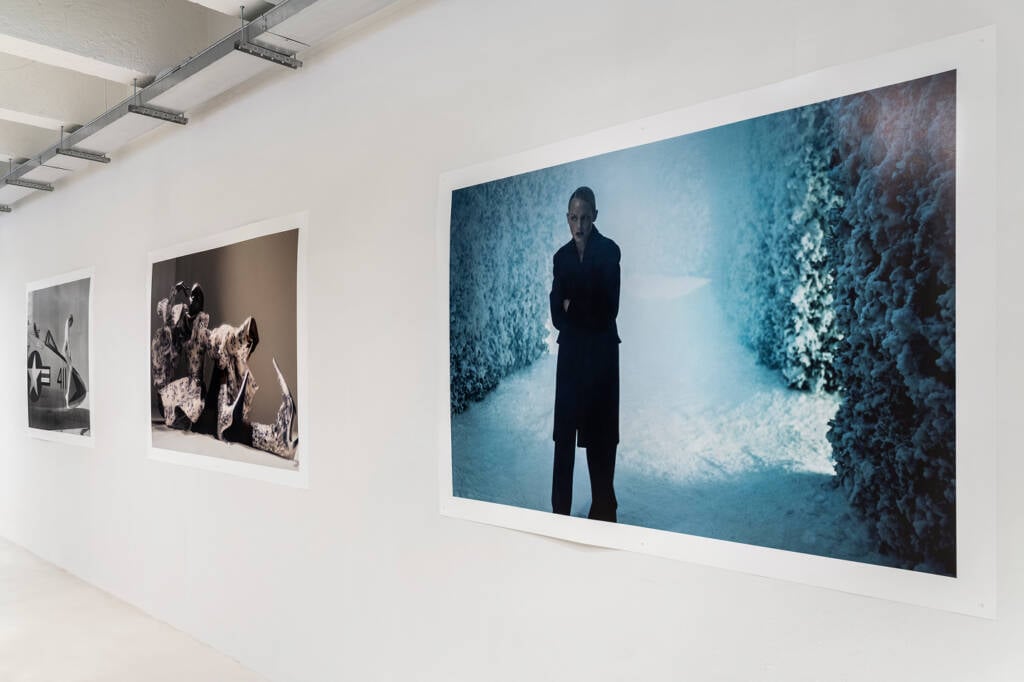
Courtesy of DELFINO SISTO LEGNANI – DSL STUDIO
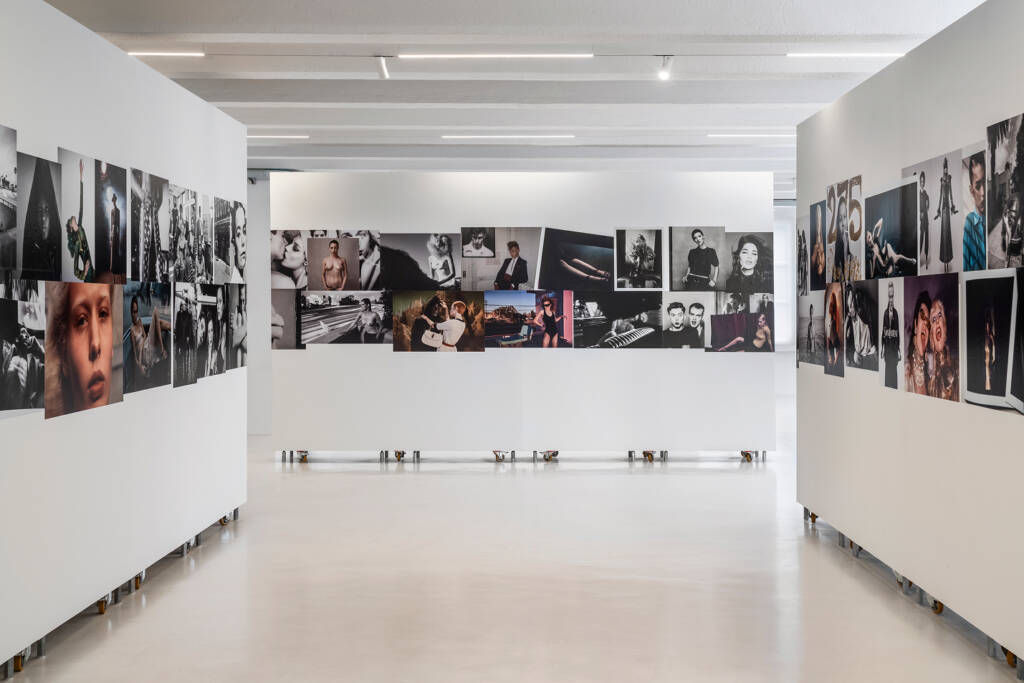
Courtesy of DELFINO SISTO LEGNANI – DSL STUDIO

Courtesy of DELFINO SISTO LEGNANI – DSL STUDIO
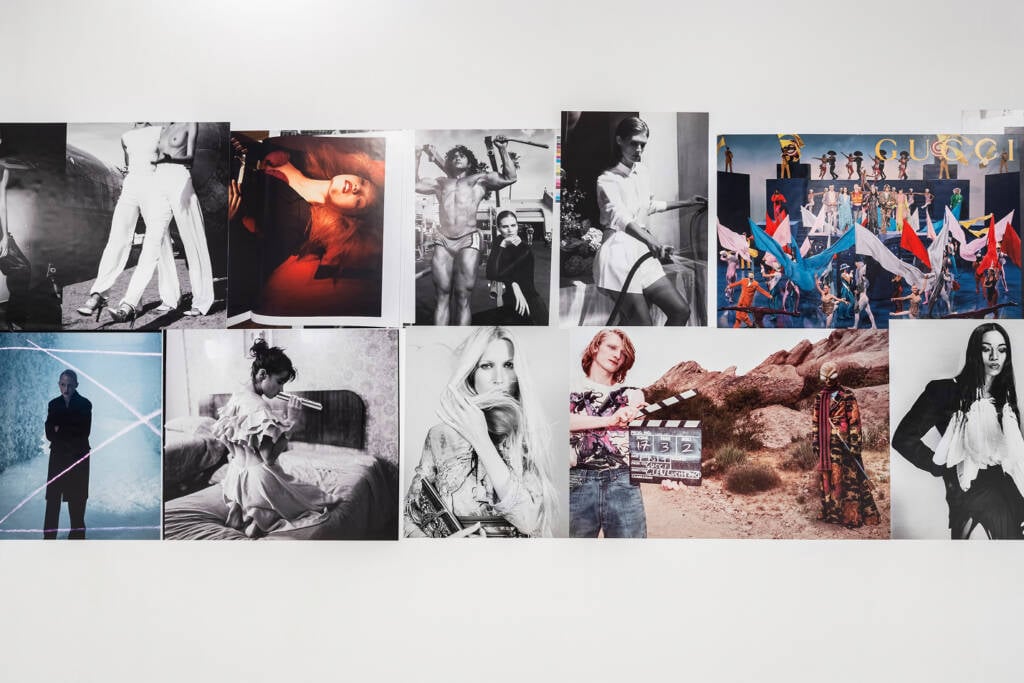
Courtesy of DELFINO SISTO LEGNANI – DSL STUDIO
Words: ISABELLA MICELI

